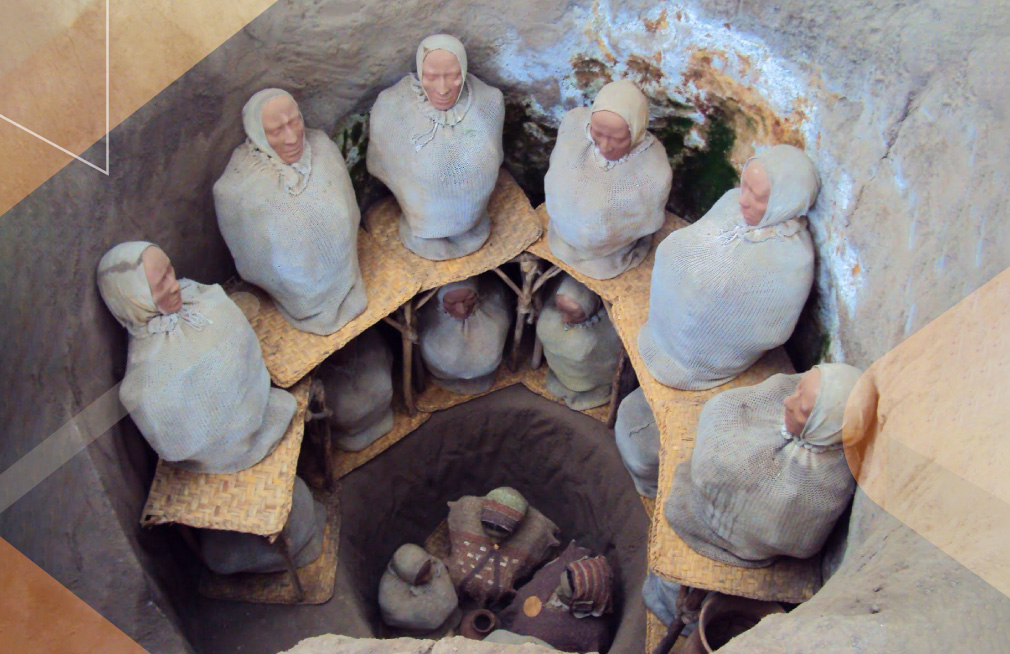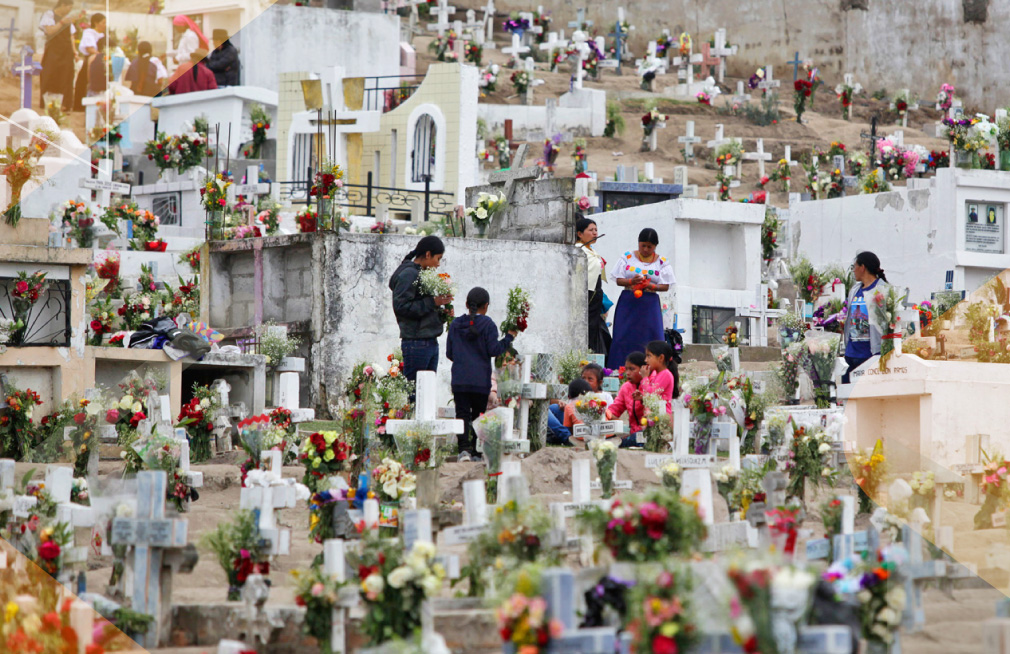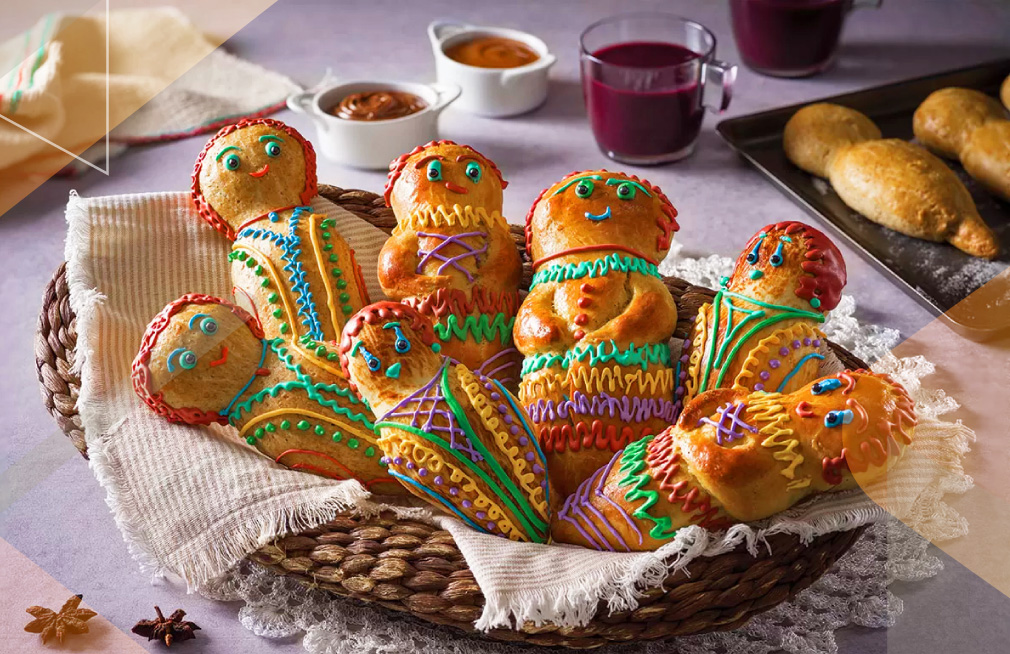
Day of the Dead and Colada Morada: An Ecuadorian Tradition
Every year, on November 2nd, Ecuador immerses itself in rich tradition and flavor to commemorate the Day of the Dead (Día de los Difuntos). This date, deeply rooted in spiritual and cultural significance, showcases the melting pot of traditions and the rich history of the country.
Historical Background
The Day of the Dead has pre-Columbian origins. Indigenous communities held ceremonies and rituals to honor the memory of their ancestors. With the arrival of the Spanish, these indigenous traditions merged with Catholic customs, creating a unique celebration that combines both worldviews.
Long before the Spanish set foot on South American soil, indigenous communities of the region held distinct beliefs about death and the afterlife. These communities, including the Quitus, Cañaris, and the Puruháes, believed that death was but a transition to another realm and that the souls of the departed continued to influence the world of the living. To honor their ancestors and appease their spirits, various ceremonies and rituals were conducted. These included offerings of food, drink, and other valuables, which were believed to provide sustenance and comfort to the spirits in the afterlife. Festivities often involved music, dance, and the sharing of ancestral tales, all aimed at ensuring that the memory of the departed remained alive in the community.

When the Spanish conquistadores arrived in the 16th century, they brought with them Catholicism, which had its own set of beliefs and customs related to death and commemoration. While initially, there might have been resistance and conflicts in religious views, over time, a syncretic fusion began to take shape. The Spanish, in their quest to convert the indigenous populations, incorporated elements of native traditions into Catholic practices. This blending made the process of conversion smoother and more acceptable to the indigenous communities.
As a result, the ancient indigenous ceremonies gradually merged with the Catholic All Souls’ Day, leading to what is now known as the Día de los Difuntos. This unique celebration retains elements from both traditions: the deep respect and offerings reminiscent of pre-Columbian ceremonies and the Christian prayers and masses of All Souls’ Day.
This intertwining of cultures not only resulted in a distinctive way of honoring the deceased but also stands as a testament to Ecuador’s rich tapestry of history, where indigenous beliefs and Catholic traditions coalesce into a harmonious whole.

Celebrations Across the Country
In Ecuador, families gather at cemeteries to pay their respects. They clean and decorate the graves of loved ones with flowers and candles. The atmosphere is one of reflection, but also of celebration, as families reminisce about their loved ones, sharing stories and memories.
Music often fills the air, with traditional bands playing folk tunes, creating an atmosphere that is both solemn and festive.
Colada Morada and Guaguas de Pan
Central to the celebration is the preparation and consumption of “Colada Morada” and “Guaguas de Pan”.
Colada Morada is a thick, fruity drink made from black corn flour and flavored with a variety of fruits like blackberries, strawberries, and pineapple. It’s spiced with cinnamon, cloves, and sweetened with panela (unrefined whole cane sugar).
The rich purple color of the drink is significant and represents the mixing of the “blood” or “essence” of the various fruits, reminiscent of the unity and collective mourning of the community. Furthermore, some believe that the ingredients used have ancestral significance, as many of them were present in the indigenous diet long before the Spanish arrived. Consuming Colada Morada is akin to partaking in a shared history and memory, a collective act of remembrance.

Guaguas de Pan are sweet bread figures, often shaped like little children or babies. “Guagua” means “child” in the indigenous Kichwa language. These bread figures are decorated with colored icing and sometimes filled with sweet fillings.
The guagua de pan is a symbolic representation of the souls of departed children. The act of crafting these bread figurines is not only a culinary tradition but a form of remembrance. The consumption of the bread symbolizes the internalization of the memories of the departed, ensuring they remain a part of the living. It also embodies the idea that death is a part of life, and through these rituals, the cycle of life and death is acknowledged and honored.
Both of these delicacies are enjoyed together and are a treat that Ecuadorians look forward to every year.
The pairing of guagua de pan and colada morada during the Día de los Difuntos is deeply symbolic. It’s not just about feasting but about paying homage. As families gather to share these traditional foods, they are, in essence, inviting the spirits of their loved ones to join them. The act of preparing, serving, and consuming these items is a bridge between the living and the dead, ensuring that the ties that bind families and communities remain strong, transcending the boundaries of life and death.

Significance and Reflection
While the Day of the Deceased is a day of remembrance, it also serves as a reminder of the cycle of life and death, and the importance of keeping the memory of our loved ones alive. The fusion of indigenous and Catholic customs in this celebration is a testament to Ecuador’s diverse cultural heritage.
The Day of the Dead and the traditional Colada Morada are more than just a date on the calendar for Ecuadorians. They symbolize the country’s rich history, the blending of cultures, and the importance of family and heritage. As years go by, the tradition continues to evolve, but its essence remains, making it one of the most heartfelt and unique celebrations in Ecuador.
Read also:
